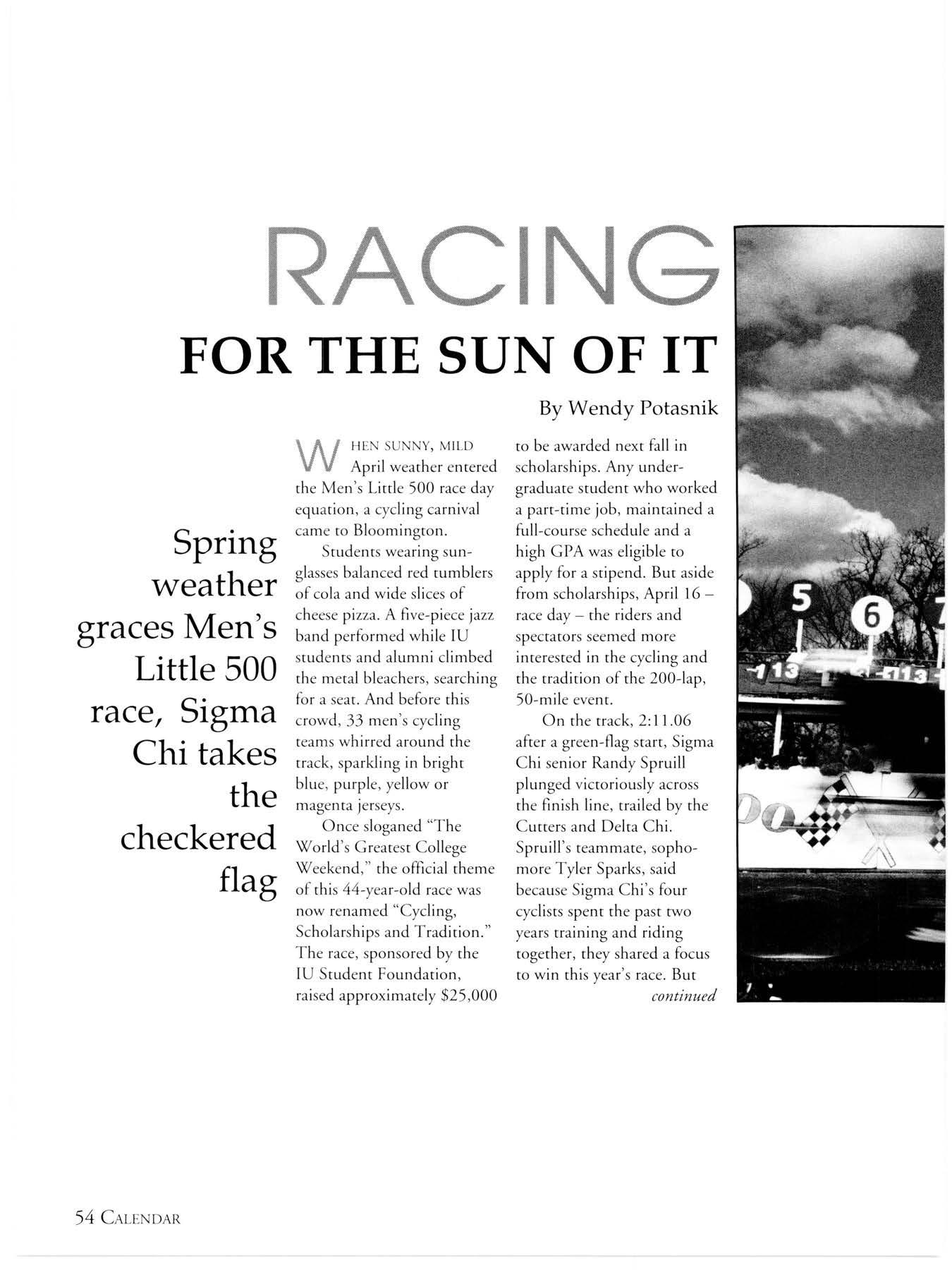
2 minute read
Smoking Ban
Jeremy Tremtc UNION EMPLOYEES B i I
Brurnmet, Bill Hanks and Ro Goen, like many employees of th University, believe steps should b taken to allow smoking inside build ings on campus.
Advertisement
KERS
TAKE IT OUTSIDE
■y Matt Hahn
- OR 30 YEARS, REPORTS and studies have been !leased on the harmful sideTeets of smoking cigarettes. he surgeon general placed a 'arning on every pack and people continued to noke. But late in the fall !mester, they were forced to noke outside.
On Nov. 1, the entire loomington campus went noke-free. The Union, assrooms, administration 'flees, stadium and some .sidence halls were included L the ban. It resulted in the niversity being the first Big en campus to go entirely noke-free. "This step, long-anticiited by some members of Le academic community, sponds to the growing vareness in our society of Le dangers of both smoking id secondhand smoke," enneth Gros Louis, vice -esident and chancellor, said favor of the ban.
The director of the nion, Winston Shindell, id he was happy with the noking ban on the campus. "For the Union, we )pointed a committee about ro years ago made up of udents and staff," Shindell id. The committee was ade up of smokers and )nsmoker. "Another thing that came out of the research committee was that we should not be spending money developing areas for people to smoke," Shindell said. "And quite frankly, we did not have any areas in the building that we could set aside without building some additional space to accommodate the smokers," he said.
Shindell said reaction to the ban from the students and employers of the Union was quite positive. "The most difficult group to convince to go smoke-free was the employees. One of the options that we did offer to the smokers was a smokecessation class to them on the clock," Shindell said.
Dyane Higgins, an employee who smoked, responded to the classes with disappointment. "You quit when you want to quit. When someone wants you to quit, it is less likely that you will. They can afford a room for us to smoke."
Nonsmokers as well thought the ban could use some fine tuning.
Some people criticized the ban because it moved the smokers outside the entrances to these buildings. Many smoking students and Union workers congregated outside the commons entrance, forcing others to walk through a halo of smoke.
But Shindell was still pleased with the change. "The quality of the air speaks for itself. The environment is much better now in the building," Shindell said. "I don't think that it's unreasonable for a smoker to step outside so that the smoke doesn't infringe upon my rights as a nonsmoker," junior Jeff Benish said. "Smokers do have rights, but if their smoking rights infringe upon the health of others, then they shouldn't be allowed to smoke," he said. "I do not believe that this is a solution one way or another. Smokers or nonsmokers will infringe upon one another's rights," junior Steve Hughes said.
Shindell and Gros Louis said appeals could be taken into review for smoking space within a building, so long as the space had proper ventilation and did not expose nonsmokers.
One must decide whose rights were being infringed upon before passing judgment on the ban. Many smokers felt they were being segregated because they chose to smoke. However, before the ban, nonsmokers' rights were taken away when forced to breathe in secondhand smoke. •











